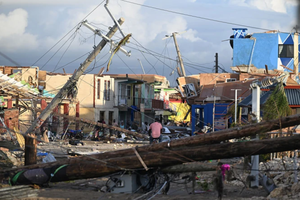Well, the title of this post will raise some eyebrows…..or perhaps make a few heads explode!
And, of course, the mere mention of Vatican II will produce the same reactions in some people. But let’s take a closer look.
As you travel, you will undoubtedly attend a Mass that differs somewhat from what you are accustomed to.
There are many who just wish we would return to the Latin Mass that they knew and loved in the past. Although I am a convert, and therefore have no memories of the Latin Mass, I can certainly understand their nostalgia for a Mass that seemed more reverent. As a former Episcopalian, I know we were sometimes called “Catholic Lite”, as our Mass (although we did not call it that), closely resembled that of the traditional Catholic Mass (Episcopalians had two types of worship: “High Church” and “Low Church”. “High Church” had the “smells and bells’ along a bit of Latin, whereas “Low Church” was pretty obviously Protestant (although perhaps more Catholic than some Catholic churches today).
The Novus Ordo Missae, often called the Ordinary Form of the Roman Rite, is the liturgical reform promulgated by Pope St. Paul VI in 1969 following the Second Vatican Council. It replaced the 1962 Roman Missal (the Traditional Latin Mass or Extraordinary Form) as the normative celebration of the Eucharist in the Latin Church, while retaining the Extraordinary Form as a permitted option. Critics sometimes argue it dilutes Catholic doctrine or fosters irreverence, but numerous theologians, apologists, and Church documents defend it as a valid, licit, and enriching expression of the faith.
The Novus Ordo was officially promulgated through the apostolic constitution Missale Romanum on April 3, 1969, directly implementing Vatican II’s Sacrosanctum Concilium. This makes it the Church’s normative rite, not an innovation but a development under papal authority.
Claims of illegitimacy ignore this binding promulgation, and even early critics like Cardinal Alfredo Ottaviani retracted their concerns after clarifications from Vatican authorities. Pope Paul VI later reinforced its doctrinal integrity by revising the Missal’s General Instruction to explicitly affirm the Eucharistic sacrifice, Real Presence, and ordained priesthood.
One of the big criticisms you will hear from some traditional Catholics, is that Vatican II “protestantized” the Mass. Far from that, the Novus Ordo explicitly retains and even amplifies core Catholic doctrines that distinguish it from those of the Protestant Reformation. Protestant observers contributed ideas but had no decision-making power; changes aligned with pre-Vatican II Catholic scholarship, not ecumenical compromise.
These Doctrines include:
♦ Sacrificial Nature of the Mass: The Mass’s sacrificial character is proclaimed at least five times (e.g., in the offertory prayers, consecration, and post-consecration texts), often aloud in the vernacular for greater emphasis, compared to the silent Latin prayers of the pre-conciliar rite.
♦ Real Presence and Priesthood Rubrics: like genuflections, elevations, bells, incensation, and the “Behold the Lamb of God” acclamation safeguard belief in transubstantiation. The priest’s unique role remains central, with processions and adorations underscoring the Eucharist’s reality.
♦ Other Doctrines: Prayers for the dead (implying purgatory), Marian privileges (Immaculate Conception, Assumption), saintly intercession, and papal primacy are all preserved in the texts and feasts.
♦ Revised Lectionary: offers a more comprehensive cycle of readings, drawing from a broader swath of the Bible across Sundays and weekdays, fulfilling Vatican II’s call to nourish the faithful with God’s Word. Proper prayers now highlight Advent and Easter uniquely each day, elevating these times beyond the older form’s uniformity.
♦ Eucharistic Variety: New prayers alongside the Roman Canon reflect the Church’s ancient diversity, promoting an ecumenical yet Catholic breadth—without diminishing the Canon’s use. Translations make the liturgy immediately comprehensible, aiding newcomers without missals or straining to hear Latin—ideal for evangelization in a “hostile” culture.
♦ Simplicity and Transparency: Streamlined rubrics focus attention on the priest’s actions and Christ’s sacrifice, reducing distractions for the uninitiated. Rooted in Latin but translatable, it allows inculturation (e.g., local music or gestures) while preserving universality, echoing the Church’s missionary history. When celebrated reverently—as intended—it fosters deeper participation and conversion, rather than alienating outsiders. A Call for Unity.
The Church teaches both forms enrich the faithful.
Abuses exist in any rite, but rejecting it outright risks schism. As St. Paul VI urged, let’s celebrate it with the reverence it deserves, trusting the Holy Spirit’s guidance through the Magisterium.
Here at The Catholic Travel Guide we try to list Catholic churches and shrines that are in communion with Rome….both those using the Novus Ordo or those with the Traditional Latin Mass. Either way, you are going to receive the body and blood of Jesus Christ, which is what the Catholic Mass is really all about.
As for me personally….well, I like the Novus Ordo, at least at our Parish, where we have a sense of reverence, some incense, and even a bit of Latin!
Now, if we could just get the choir to wear choir robes, process in with the priest, that would be great (can’t hope for a choir loft unless we build a whole new church).
I know quite a few people who do attend the Latin Mass…most of them just feel more at home with it. Of course, I have met a couple of “holier than thou” types who seem to think those of us who prefer the Novus Ordo are somehow just not Catholic.
Of course, there are quite a few opportunities to attend a Latin Mass…you just have to check around a bit to find one.
 “At 9:13 a.m. local time, the blood already appeared semi-liquid. At 10:05 a.m., the complete liquefaction was announced,” the archdiocese reported.
“At 9:13 a.m. local time, the blood already appeared semi-liquid. At 10:05 a.m., the complete liquefaction was announced,” the archdiocese reported.




